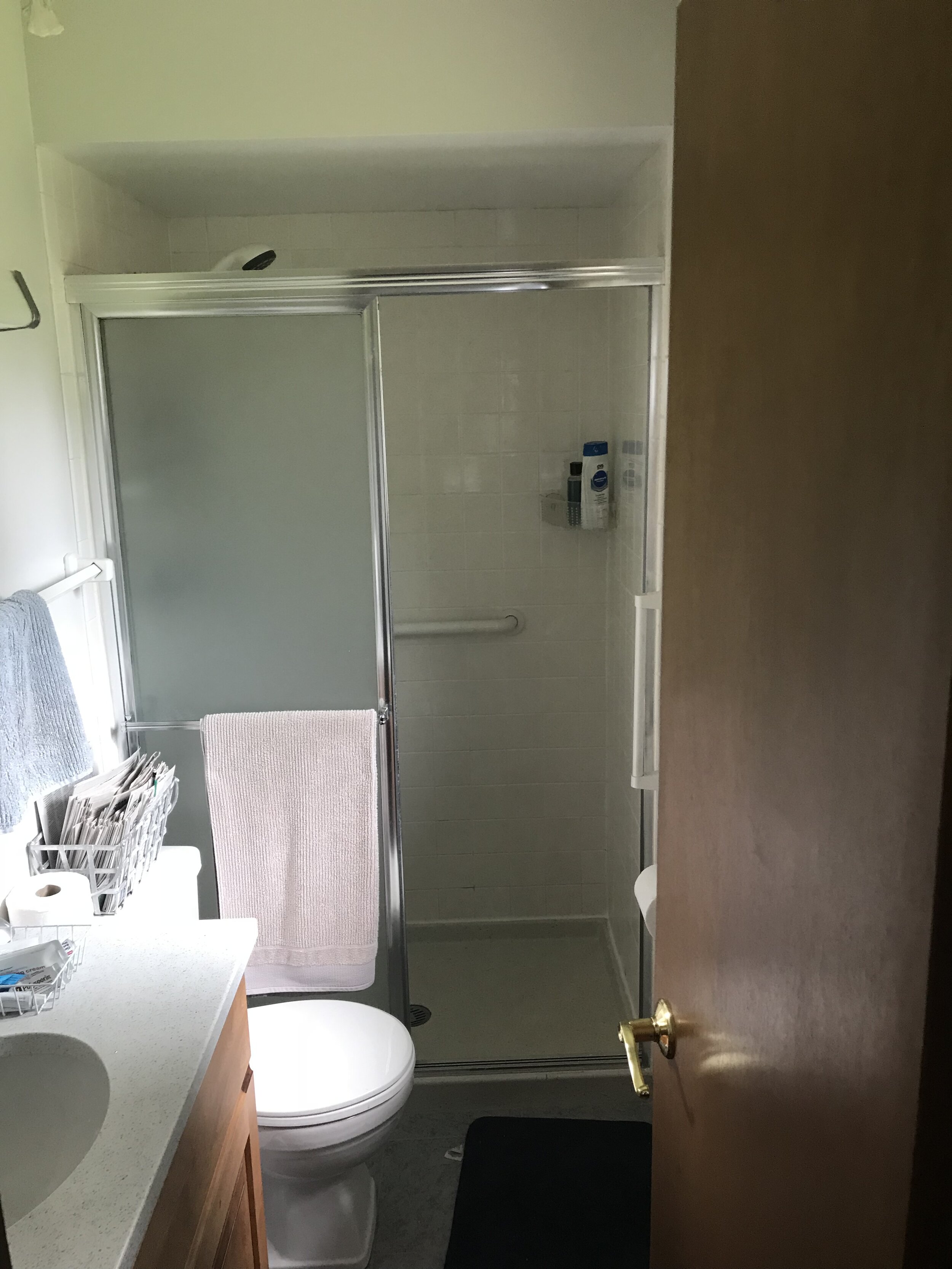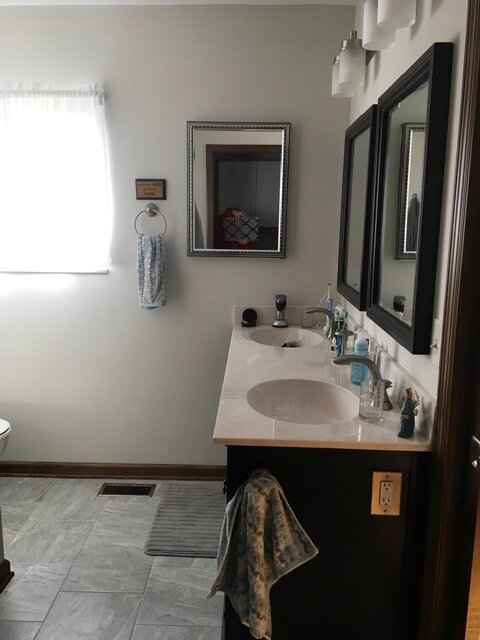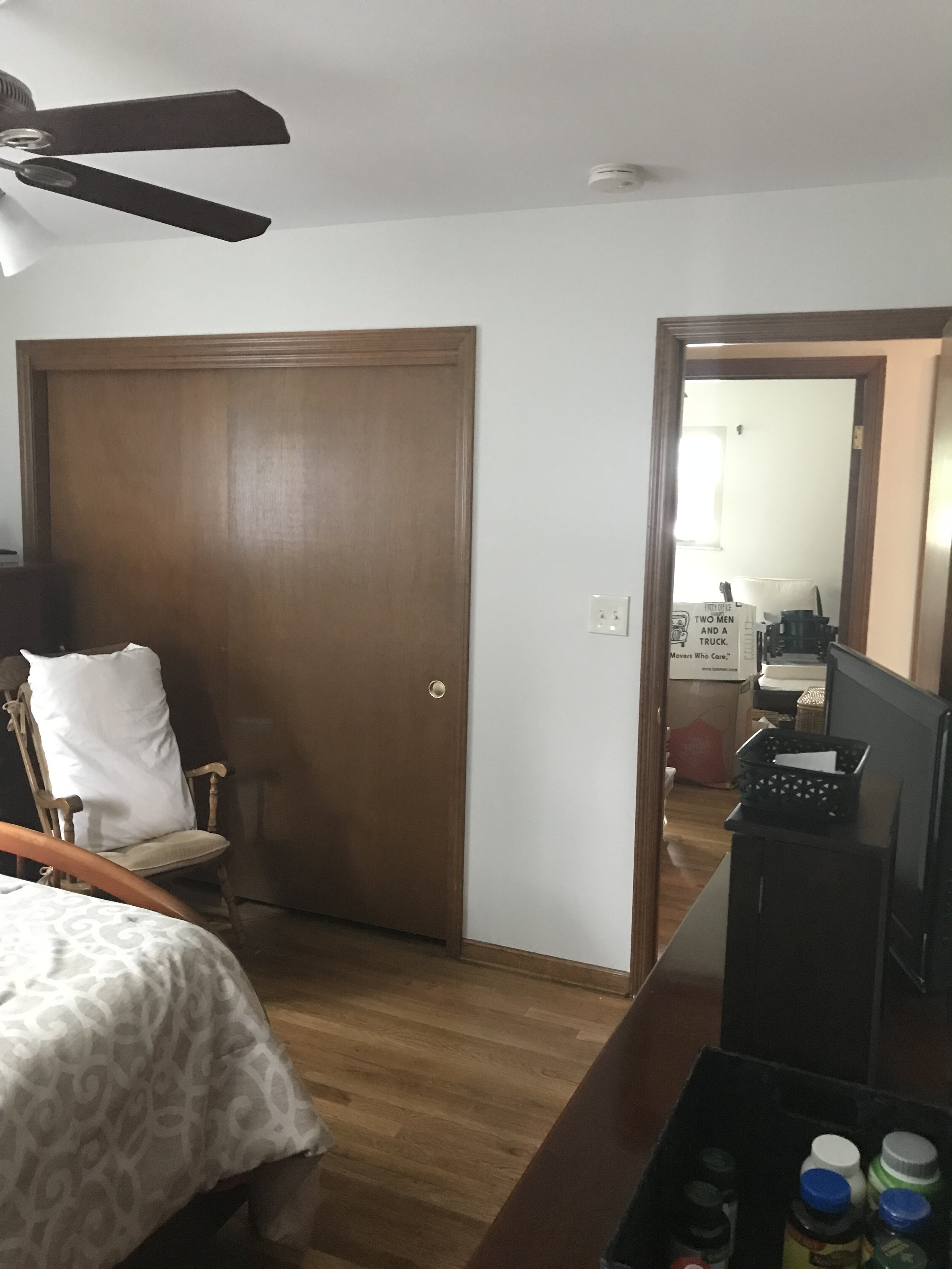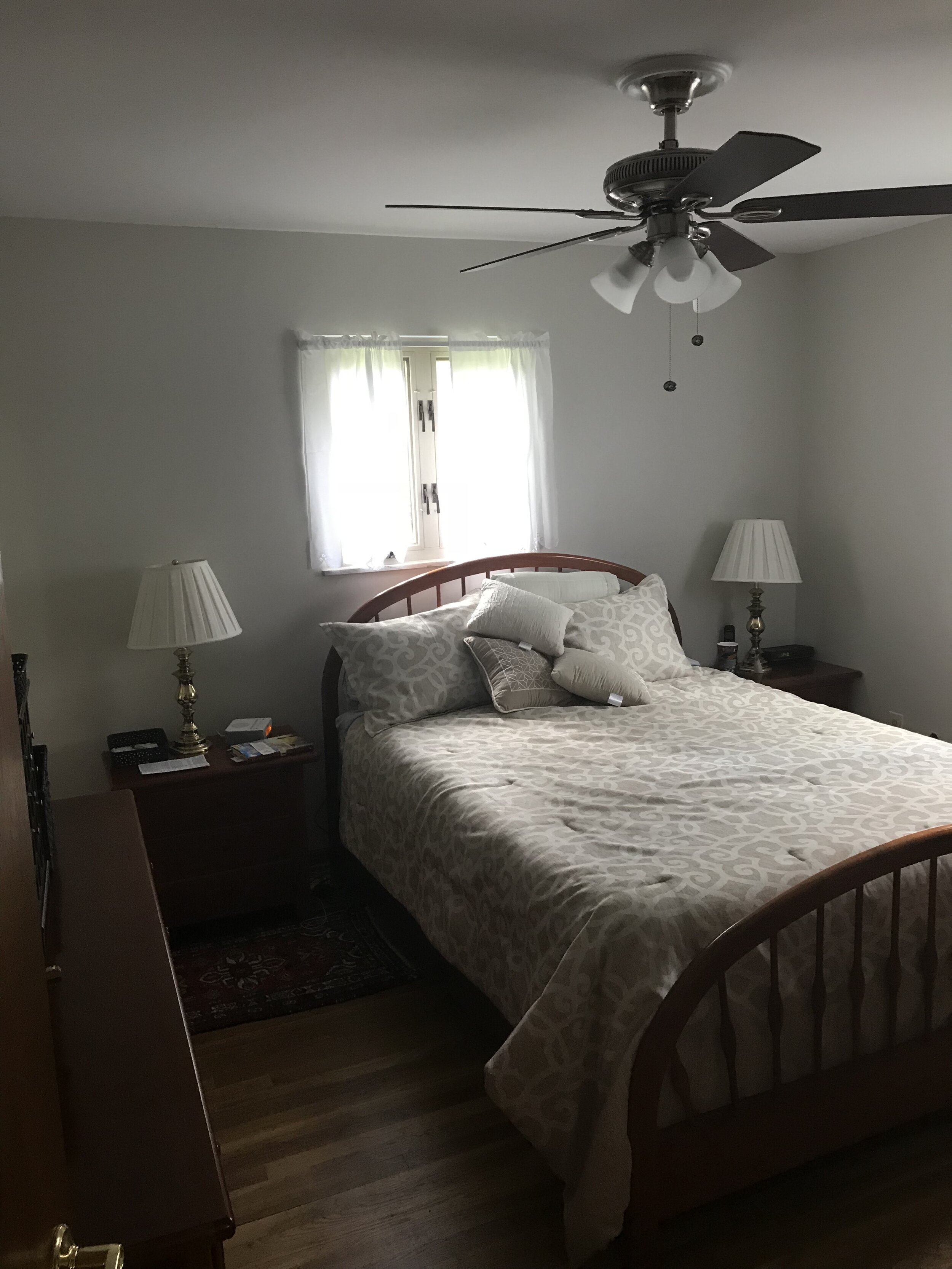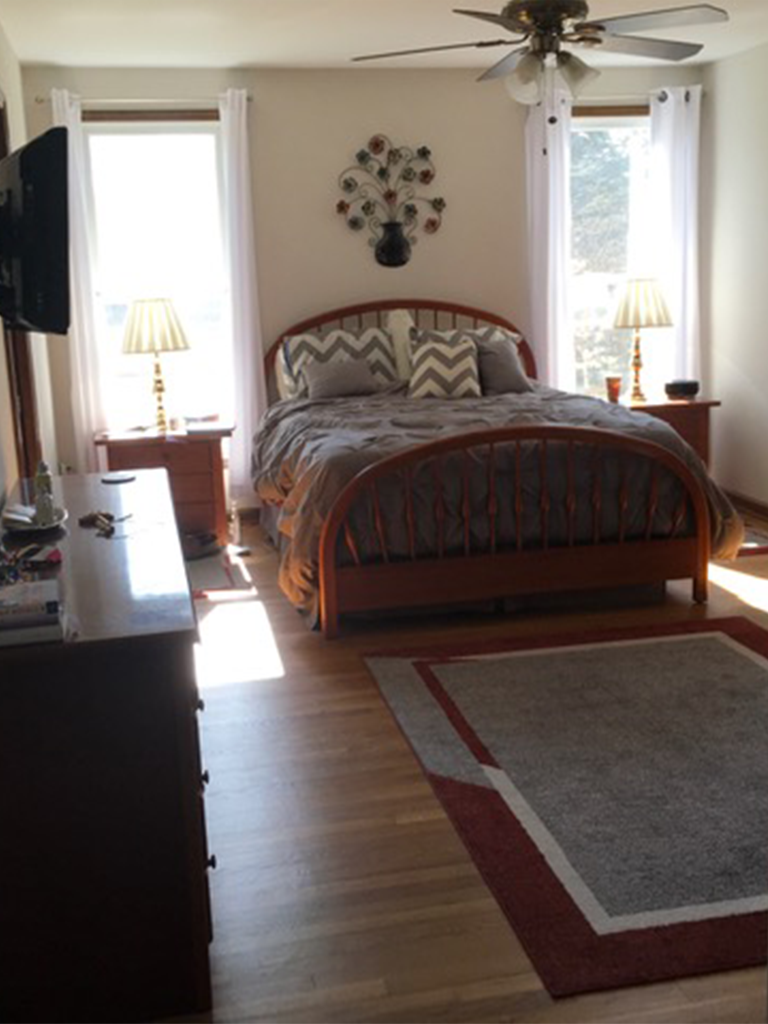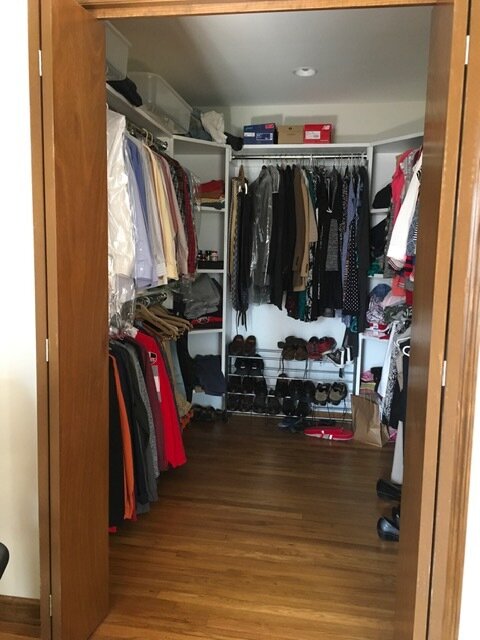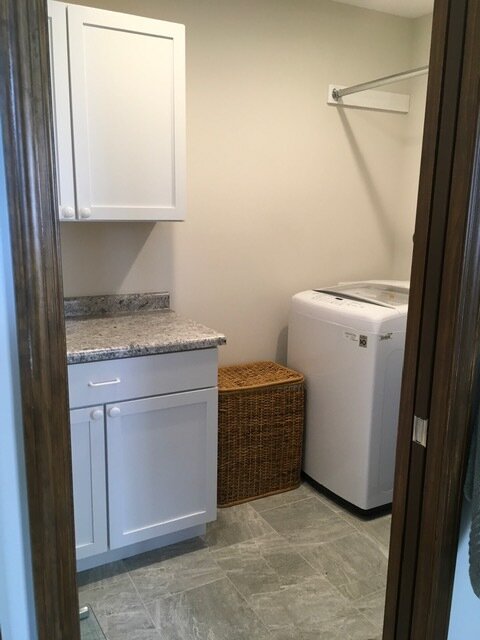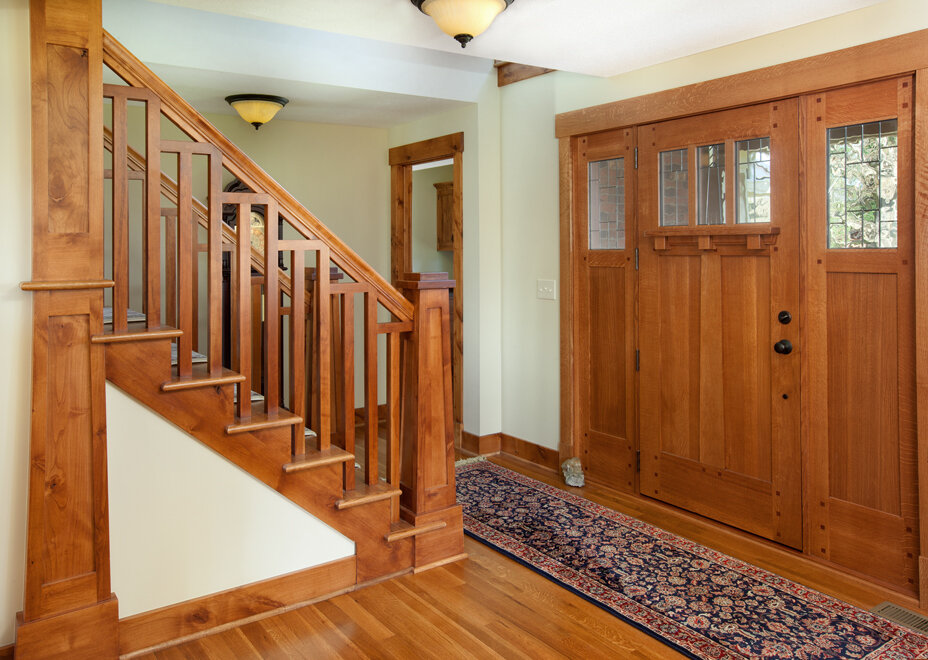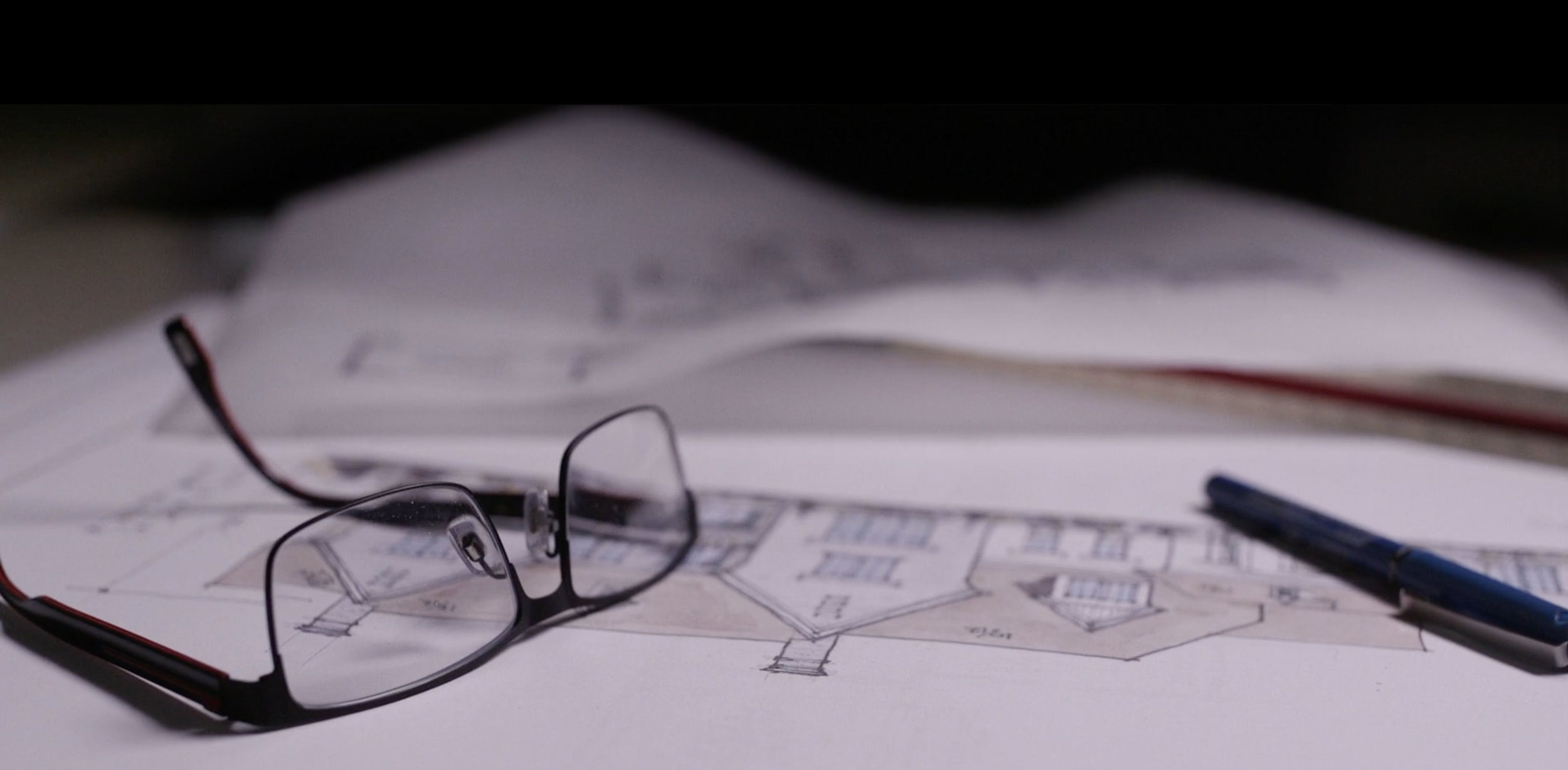
DESIGN BLOG
Outdoor Living: How to Make the Most of Your Space
Sitting outside enjoying a meal with friends, relaxing with a glass of wine, or gathering with family around the campfire reminds us what is really important — time spent together. Now that you’re likely home more often, is your outdoor space a place you look forward to spending your down time or does it leave a lot to be desired? Your home doesn’t have to stop at your back door; you can easily create an outdoor “room” to enjoy al fresco living on any budget.
Now is a great time to plan and create your outdoor space. The design team at RDS will help you translate your dream space to an outdoor reality. We want to share our thought process to help you start thinking about what you might like and how to make the most of your outdoor living area.
Create a master plan.
Whether it’s a patio or an expansive backyard retreat or any size space in between, you need a master plan tailored to your budget.
Decide where this new living space will be situated. Realistically, it should be a natural extension of the family living space (if possible) and allow you to enjoy any views or natural features found on your property. This might allow for new patio doors or foldable, accordion doors to be installed and really bring the outdoors in.
Make a list of activities the space must accommodate - entertaining, outdoor cooking and dining, games, reading, a pool or spa. Do you want it to be one open space with multiple uses or do you want designated areas for different activities? A bocce ball court or an area for a trampoline will need more room. A fire pit that allows for many people needs its own area. Do you entertain a lot and need a large table? The configurations of space are endless, so know what your family wants in order to create the perfect design.
Correctly and carefully designed landscaping will help define the space, as well as provide needed privacy. Use planted containers with taller “anchor” plants in the corners, and perhaps a covered roof or pergola structure to define the ceiling. A lattice trellis softened with colorful climbing plants can add privacy. If you want to be able to view your whole yard, you might want to add plants along your property lines to create privacy.
Now that you have a plan…
Is a covered outdoor space the goal? It can be anything from a pergola, arbor, gazebo, or sun awning, to a covered porch. While covering the space is not critical, it will allow for more time spent outside, no matter the weather elements. Utilizing a roof structure that can accommodate hidden retractable screens will help with pesky bugs.
A heat source everyone can gather around is a central theme for any outdoor space. This can be a full outdoor fireplace that serves as an anchor for the space, a built-in or portable fire pit, or a chiminea. Consider all of your fuel source options: wood burning, gas, electric, or a combination. There’s nothing like roasting marshmallows with family and friends over an outdoor fire on a cool fall evening!
Cooking outside is a must, but what are your needs? Does Summer even count if you didn’t have food sizzling on the grill? The grill can be anything from an amazing built in unit to a portable hibachi. Choose features important for your needs and RDS will help create a design that takes advantage of the space and its elements. You don’t want to install a grill in the outdoor kitchen in an area where the smoke will blow across the table – so plan strategically. Choose countertops and cabinets that will work for your storage and prep needs and can withstand the outside elements. Do you need a sink or small refrigerator installed or is your kitchen close enough to be able to get what you need from inside?
Water features are soothing and create white noise to offset other distracting sounds. These can be permanent or portable features and can be placed anywhere. If a pool or spa is part of the plan, a fence and gate will be needed and there will be additional zoning and building code requirements.
Choose a flooring material to fit your budget and needs. The flooring decision is one that needs to be made early on, as the other elements you may want to use may depend on the flooring. Will your space be elevated or on the ground? An elevated deck with an outdoor kitchen requires a sturdier surface. Drainage systems will have to be planned, as well as considering the type of maintenance needed for whatever flooring you choose.
Low voltage lighting is perfect for landscape accents and walkway lighting. Overhead lighting should be used sparingly, so you can enjoy the evening sky. Carefully placed outdoor lighting can help with evening entertaining but try to keep the lighting limited to general outdoor ambience.
What accessories will complete your space? An exterior flat screen television, heaters, sculptures, fountains, sport courts?
Whatever your plan, your outdoor living space should reflect your tastes and needs. We love nothing more than spending time outside when we are able to, and RDS, your leader in outdoor home design, would love to help you design your backyard retreat. We might even just stay to roast some marshmallows for a s’more!
Our goal is always to create a design that brings your dreams for your spaces to life. Contact us today so the RDS team can start designing your outdoor living oasis.
An Arts & Crafts Home - Is it for You?
Our RDS designers create many different styles of homes for clients, but English Arts and Crafts happens to be a style that is especially loved by our founder and principal designer, Jim Wright.
The Arts & Crafts movement began in Britain in the late 1800s. William Morris, a poet, social reformer, and artist was influential in this movement, as was John Ruskin, an English designer. The basis of Arts & Crafts is hand craftsmanship and design in all aspects of the home and its furnishings. It was a call to return to skilled craftsmanship and a move away from the mass production of goods. The movement is based on a philosophy to elevate the decorative arts and make them accessible to all. The Arts and Crafts Exhibition Society, formed in England, was an instrumental group in developing the artists and craftsmen who supported this movement. When the movement migrated to America, it was further influenced by Gustav Stickley, a furniture manufacturer in New York. He urged the building of homes and furniture by hand with local materials and provided plans and furniture for purchase through his catalog. Frank Lloyd Wright was also instrumental in the development of the Arts & Crafts style in the U.S.
Is an Arts & Crafts home something you might be interested in? We put together a list of distinctive details that might help you better understand this type of home when we discuss ideas and concepts for your new project.
Architectural Elements of the Arts and Crafts Home:
Buildings blend with the landscape, usually with rock foundations
Utilizing locally made materials
Simple Craftsman-like and Bungalow style homes
Frank Lloyd Wright-styled homes with a central chimney, overhanging roofs, horizontal roofs, and built in furniture
Exposed beams and rafters
Large front porches beneath the main roof
Natural finishes on wood trim
Cabinets, window seats, and shelves that are built in
Earth tones and colors
Hipped or gabled dormers
Siding is usually wood shingled, but brick and stucco are also used in combination
Relief tiles for fireplaces
Asymmetrical appearance
Multiple pitched gabled roof lines
The Arts & Crafts Home Means:
Simple, functional designs
Handcrafted objects, such as “craftsman” and “mission” furniture, pottery, jewelry, textiles, and metalwork
Quality craftsmanship
Well-designed objects
Minimal decoration
Not mass produced
These homes are beautiful in their quality and simplicity. As your residential design specialists, we would love the opportunity to help you design a home like this or any other type of home you are thinking about building or remodeling.
Visit our Portfolio page for more inspiration and give us a call to start the discussion of your new home.
Project Profile – Adding Space to a Ranch Home
One of our best resources for business are our builder relationships. So, when Blanchard Builders reached out to us with a project, we were excited to jump in and create a new space for their clients.
Rick and Patty had recently moved from a two-story home in Worthington to an older ranch home. The couple was looking for a home without stairs and wanted to stay in the Worthington area. But while their new home was all one level, it was missing a few things.
We find this to be a common issue with older ranch homes – the need for more closet space, bigger bathrooms, an open floor plan, and a larger kitchen. Many of our clients want to be in a certain area of town, but the homes don’t meet all their needs.
In Rick and Patty’s new home, the laundry was in the basement, which meant they would be going up and down the stairs – the exact thing they were trying to avoid. In addition to moving the laundry to the first floor, a walk-in closet, and larger master suite with more vanity space in the bathroom and a sitting room were on their must-haves list.
Budget is a concern with every project, and it’s often challenging to find enough space to accomplish the homeowner’s goals without compromising their budget. But we work hard to find the best solution for each of our clients. Mike from Blanchard Builders is a pro at this too. He’s always on the ball and up front with clients. He wants to make them happy and keep the project on budget.
We got to work and drew up plans, adding a couple hundred square feet to the back of the 1,428 sf home. Every project is a process, and where we start isn’t always where we end up. With a final square footage of 1,868 sf, we were able to redesign the space to accommodate everything Rick and Patty wanted.
Not every project we undertake is a custom home or a complete remodel. Sometimes it’s adding space to the back of the home and shifting the floor plan around to accommodate the homeowner’s lifestyle. Reach out to us with the needs and wants you have for your home and we will work together to bring your vision to life.
Our Client's Experience - Adding to the Home
We design more than custom homes and whole-house remodels. Every bit as important to us are the smaller remodeling projects. These are the projects that make the biggest difference in the lives of our clients. We recently finished a project like that for Patty and Rick Bradley after they downsized to an older ranch home in Worthington, Ohio. While their new home was all one level, it was missing a few things. Patty and Rick wanted to add space in the bedroom and bring the laundry room to the first floor. It was our pleasure to work with the Bradleys to bring their vision to life.
What was your experience like with RDS – Residential Designed Solutions?
Hylas Stemen, Designer and Project Manager, worked with us to design an addition to the back of our master bedroom in the older home we purchased, incorporating a laundry room and large walk-in closet in this space. Hylas was interested in what our needs were, worked with us in the design, made changes when needed and worked to keep our project within our budget. He also helped us collaborate with our builder, Blanchard Builders, who had recommended Residential Designed Solutions to us.
What space(s) did you have redesigned?
We extended the back of our house 200 sq.ft. to enlarge the existing master bedroom and allow for a sitting area. Hylas designed an enlarged master bathroom and walk-in closet, and a sizeable laundry room to bring our laundry to the first floor from the basement. Hylas walked us through options and presented concept sketches to ensure he had captured what we were looking for. He redrew the plans when we found the original to have been beyond our budget - this was because of miscommunication between us and the builder. At all times he was professional and considerate of our needs.
We got everything we asked for! The size of the room is
perfect, the closet space is amazing, the bathroom elegant,
and the laundry room perfectly located. I could not pick
one thing over another - we love it all.
If you could change one thing, what would you change?
I would have liked to have had a meeting with the builder and RDS together at the onset, so that everyone was clear about the proposed budget.
What was your overall experience like?
This major addition to our little home was the best experience we could have had, and it puts our home in perfect condition to serve us through our retirement years.
What advice would you offer to someone who is designing a home or redesigning a space in the home?
Make sure everyone is clear about the proposed budget, so no one, particularly the designer, needs to duplicate any work.
Who else did you reach out to for designing your home?
We did not talk with anyone else. Residential Designed Solutions was recommended to us by our builder, Blanchard Builders, and after meeting Hylas and seeing his ideas, there was no need to go anywhere else.
Would you do it again?
Yes, absolutely. We appreciated their professionalism, dedication to their craft, and their communication with us.
Patty and Rick trusted us to take their vision and make their home work for them. Can we help you? Give us a call 614-430-0037.
Meet Heather Baldwin - Designer and Project Manager
At RDS, Residential Designed Solutions, we are proud of our team members! We are introducing a “sketched” profile of one of our newest key associates so that you can get to know us better at RDS. Heather brings a great deal of expertise to the table!
Name: Heather Baldwin
What is your position at RDS?
I am the Project Lead. I work directly with clients to discuss their project, visit the project location to take any measurements of existing projects, come up with conceptual designs, coordinate with other trades and disciplines like builder and subcontractors, engineers, inspectors, zoning officials, etc. I create the construction documents as well as review the plans.
What is your specialty area?
My specialties are Residential Designs & 3D Modeling.
What are your current job responsibilities?
I am responsible for 3D modeling, consultations, field measuring, designing, and full construction documents.
When did you begin working at Residential Designed Solutions?
I began working here May 10th, 2019.
Where else have you worked?
I have worked for MI Homes, P&D Builders, and Buschman Homes.
How long have you worked in the industry?
10 years
What colleges did you attend and what training have you received?
University of Utah, Bachelor of Science in Architectural Studies, CPBD, Currently Vice Chairperson for the AIBD OKI Chapter & BIM-R Certified
Where do you live?
Canal Winchester is home for me!
What volunteer work do you do?
I love being a Weekly Reading Buddy for the Columbus Metropolitan Library. It is so exciting to help children in K-3rd grade learn to read with confidence.
I am also a Weekly Leader of youth 8-18 programs developing their talents, skills and self-confidence.
Have you ever heard the Bell Ringers? You might have heard me since I am an Annual Bell Ringer for the Salvation Army!
I give back by annually providing school back packs & supplies as well as a Christmas program & gifts to the children of parents in the ALVIS House program.
I’m a veteran 2x Pelotonia Rider for both 45 & 25 miles.
What else do you want us to know about you?
I am passionate about designing, building and developing environments, both physically and socially for others to make positive memories and experiences.
Is Craftsman the style for you?
A Craftsman-style home is distinctly American. Taking cues from the British Arts and Crafts movement, the Craftsman style’s artisanal approach came as a direct response to the over-the-top Victorian homes of the late 19th-century. Showcasing hand-worked, local materials with decorative elements such as brackets, lintels, and rafters, the homes exterior usually boasts more details than the interior. That doesn’t make the interior any less important. With its simple, wide-open layout, the interior of a Craftsman-style home makes the most of a typically limited square footage. Proud of its details and taking inspiration from nature, Craftsman-style architecture stands out and remains popular for its purity of style.
So, what really makes a Craftsman home “Craftsman”? We have the distinctive details to share with you to provide a better understanding of what we look at when we review your concept photos and digital idea books.
Low-pitched, gabled roof: The low-slung rooflines reflect the influence of Japanese architecture in the style. A distinguishing characteristic of Craftsman style, these roofs typically have wide, deep eave overhangs with exposed rafter tails and beams.
Front porch: The wide roofs lend themselves to having porches on the front of the home so it’s rare to find a Craftsman home without one.
Knee braces: These triangular supports are a structural alternative to exposed rafter tails and roof beams. Like beams and rafter tails, they are often decorative and can be added underneath any deep roof eave.
Tapered columns: One of the most distinctive characteristics of a Craftsman home are its tapered columns. Lending support for the porch roof, the columns are typically short and rest upon massive stone or brick piers that extend to ground level. But not all columns are tapered; another popular variation is the double column usually together on the same stone pier.
Partially paned door: A great test of authenticity for a Craftsman home is how their doors are styled. Almost all original versions have glass panes in the upper third of the door, separated from the bottom paneled portion by a thick piece of trim.
Multi-pane windows: Instead of standard single-pane windows, Craftsman-style homes typically use a multi-pane version. The most common configurations are either four-over-one or six-over-one double-hung windows. The windows are often grouped together and cased in wide trim.
Single dormers: When Craftsman homes have dormers, they tend to be wider and stand on their own, unlike the pairs of dormers that typically appear in Cape Cod–style cottages. Single dormers are often wide enough to accommodate more than one window.
Earthy colors: Craftsman homes are often painted in a nature-inspired palette of browns and greens to help the low-profile bungalows blend effortlessly with their surroundings. Despite the mostly muted palettes, contrasting colors are typically used to highlight architectural features like trim or decorative supports.
Mixed materials: Craftsman-style homes traditionally feature a mix of materials. Wood clapboard, shingles, or board and batten, the siding is typically painted in palettes inspired by nature. Porch piers and foundations are often made of stone, but brick, decorative concrete block, and stucco are materials frequently found on Craftsman-style homes.
Interior details: Carrying over from the exterior, you will find mixed, natural materials inside a Craftsman-style home. Built-in wood cabinetry and shelves, custom-made features like window seats and nooks, and a prominent stone fireplace (or two!) are all features found in this warm, architectural style. And ever-practical, Craftsman homes commonly offer an open floor plan that facilitates easy access from the kitchen to the rest of the house.
Is this the architectural style for you? If you’re building a new home or you want to incorporate a little Craftsman-style into your existing home, we can help! At Residential Designed Solutions, we pride ourselves on being able to design the home style you’ve envisioned. Craftsman, French-Country, or Modern home ‑- we would love to work with you to create the home of your dreams.
Visit our website rdshomedesign.com for more inspiration and give us a call today!
Meet Lauren Givens - Marketing and Business Development Manager
At RDS, Residential Designed Solutions, we are proud of our team members! We are introducing a “sketched” profile of one of our newest key associates so that you can get to know us better at RDS. We’re excited to have Lauren join us!
Name: Lauren Givens
What is your position at RDS?
I am the Marketing and Business Development Manager.
What are your current job responsibilities?
I’m working to create a system to show our clients and builders how much they mean to us at every point in the process and our relationship. We want to provide the best service possible and I’m working on the creative side to accomplish that.
When did you begin working at Residential Designed Solutions?
I started working here in January of this year.
Where else have you worked?
I’ve worked at a wide variety of places, but most recently worked in residential real estate.
How long have you worked in the industry?
I grew up attending industry events with my Dad and helping around the office during school breaks as I got older. This is a new and exciting chapter for our family business.
What colleges did you attend and what training have you received?
I earned a Bachelor of Arts in Visual Communication Design with a minor in Marketing and Art History from Kent State University.
Where do you live?
I live in a little fixer-upper in Westerville with my husband and rambunctious little boy.
What volunteer work do you do?
I hope to get involved with the NARI (National Association of the Remodeling Industry) Community Service Committee this year. They have been working to fix up a women’s home in Delaware County for the last couple years. RDS is a proud member of NARI and the impact they have on the community.
What else do you want us to know about you?
I’m a momma to an energetic, spirited, and sweet little boy, and wife to one of the strongest and funniest guys I know. I’m a coffee-fiend, amateur foodie and lover of all things Ohio, beautiful books, and handwritten notes.
We’re in the business of making houses into homes. What do you love about your home?
I love the potential my home has to be a cute little ranch on a quiet street in Westerville. But I mostly love the memories that are created daily with my husband and son. The walls are filled with laughter and joy.
Shingle Style Homes
A shingle style home is reminiscent of a seaside home with a wide porch, wood shingles, calming sea breezes (we can dream, right?), an informal appearance, and most certainly, a charming home. While homes like these tend to be found on the East Coast, their popularity here in the Midwest continues to be seen. We, your RDS designers, have created this style of home for many clients.
What Are Shingle Style Homes?
Shingle style homes are truly an American style of home. These homes flourished from 1880 – 1910, primarily in New England due to the abundance of wood for the shingles and its ability to hold up to the salt air and winter weather. Often built on stone foundations, they appear to grow out of and be part of the landscape. These rambling homes have an irregular floor plan, abundant porch space to enjoy the summer breeze, and are often quite large as many were built during the Gilded Age. The cost of these homes made them inaccessible to most people in the 1800’s, so they were mostly summer homes for the wealthy. Today, these houses are being built in all areas for people looking to recreate homes with an informal, rustic, relaxed design, evoking casual elegance of a time past.
The Characteristics of a Shingle Style Home:
Homes are usually covered with a layer of wood shingles that tie all of the sloped and vertical surfaces together. The shingles are allowed to weather naturally, are stained, or painted. They can be sided in brick or clapboard. Most homes are built on a rock or stone foundation.
The houses are built with an informal style. They can have big wide porches, for enjoying the views and relaxing. Porch supports are usually plain with simple railings but can be as ornate as the homeowner desires.
Rooflines are more complex, with steeply pitched, but free-formed rooflines. There are usually two pitches, with the lower one being steeper and some of the homes have gabled roofs. Rooflines have their surfaces broken up by towers, chimneys, dormers, or turrets, which adds visual interest to the roofline.
Windows are prominent, allowing views from any room. Windows range is size from very large to small. Windows are arranged in rows of two, three, or more. Decoratively shaped windows in round, square, or rectangular shapes are also used to add an aesthetically pleasing design element.
Interiors of the home are technically to be filled with wood. Wood paneling is popular, as is batten or beadboard. Built in window seats allow for places to read and view the outside. Furnishings are casual and fireplaces are a must. The goal is to create a cottage feeling, informal and relaxed, even though the home itself is very large.
Whether you want to have a more traditional Shingle Style home or a more modern take on it, our design team would love to work with you to design your own home and make your vision a reality.
Give us a call to start the conversation. Have another style you’d love to build? We can design anything you desire!
Residential Designed Solutions and Jimenez-Haid Do It Again!
Residential Designed Solutions and Jimenez-Haid Custom Builders do it again! The latest issue of Housetrends features a gorgeous home in Dublin that we designed from all of the clients’ requests, photos and detailed design ideas. Jimenez-Haid Custom Builders brought it all to life.
We lovingly call this home Magnificent Modern! It features contemporary details and curved walls and soffits. An oval landing and center opening in the foyer, with a great deal of steel needed to make it work, creates quite the statement. In keeping with the curves inside the home, we designed curved stairs to the outdoor living areas.
Have we piqued your interest in the home? Read all about this Magnificent Modern home in the latest issue of Housetrends Magazine.
All of the details and photos will have you saying, “Wow!”
We’d love to design a “Magnificent” home for you. Contact us at 614.430.0027 or email us at info@rdshomedesign.com to start the process.
We Are Grateful For You!
Thank you, thank you, thank you! We can’t say thanks enough to those of you who have utilized our design services at Residential Designed Solutions for your home building and remodeling projects. We appreciate the confidence you have in us to create your dreams.
In addition, we send our deepest thanks to those of you who have referred us to your friends and family for their design needs. We are so appreciative of your willingness to spread our name! Please be sure to continue to refer us to your friends and family.
And to those of your repeaters-you get our thanks, too! Knowing that you loved what we designed for you the first time enough to have us create another design for you as well means the world to us.
We are humbled by the outpouring of respect, sharing, and allowing us to be part of your vision for your new home, renovation or addition, or personalized plans. We love designing homes at RDS and thank you for your trust in us.
